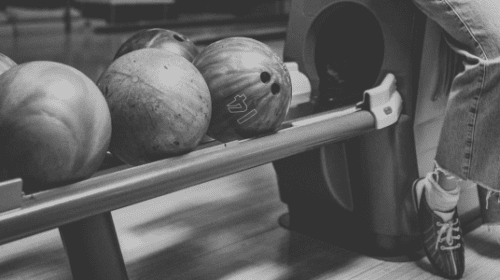Anyone in recovery knows that sometimes you can find happiness and peace where you least expect it, and that it often takes a few tries to stay clean. These two realities are put front and center in a piece written by Recovery Unplugged’s VP of Business Development, Joseph Gorordo, as he discusses the time he went to rehab in Monterrey, Mexico. Read Joseph’s gritty and candid account of the experience, and the unlikely impact it had on him.
The Decision to Seek Help
In the winter of 2006, at 22 years old, I was already a rehab veteran. After bouncing around several facilities in Texas, and trying a couple of geographic cures, I found myself weighing about 120 pounds and on the brink of homelessness. My mother was letting me stay in her spare bedroom while I made just enough money working at the local Chili’s to maintain my heroin habit. When I wasn’t working, I was either scoring drugs or writing horrible songs that sounded like third-rate Nirvana rip-offs.
Needless to say, I was pretty miserable. One day my mother approached me to, once more, try and get me into treatment. She had found a 90-day program just outside of Monterrey, Mexico. While I was ready to admit that I needed help, I didn’t think I needed 90-days’ worth of help. I agreed to go to treatment on the condition that I would only stay for 30 days.
Arriving at the Mexican Rehab
The following morning, my mother and I were on the Mexican equivalent of a Greyhound bus. We made the four-hour trip to Monterrey and then rode another hour in a cab to get to the facility. We arrived at a compound on the side of a mountain. We knocked on a metal door and were let in by an older gentleman by the name of Paco.
As Paco started walking us through the paperwork, I should have known something was odd. Every time I signed a document, my mother would also sign. That isn’t normal when you’re an adult, but whatever. I didn’t bother reading anything and, frankly, I was too dopesick to care. Once we were done signing paperwork, my mother said her tearful goodbyes and I was escorted through another metal door–this is when things got interesting.
On the other side of the door, there were two big scary-looking dudes with tattoos and the type of mustaches I typically associated with law enforcement. I was escorted to a large closet and told to take off my clothes. Too confused to argue, I complied. I stood before them in my underwear. They shook their heads. Now I’m naked. They handed me some old basketball shorts and a t-shirt. I put them on and crawled into the bed they pointed to.
Mexican Detox and “El Salón”
I spent the next several days detoxing in that bed. There was always someone sitting next to me to make sure I was okay. I was given cigarettes at designated times. All my questions were met with very brief and very vague answers. Eventually, I was ready! They told me to get up and stood me in front of a large barrel of water with a cup floating in it. “Shower,” they said. So once again I stripped down and began to bathe in the same way I would do from time to time in gas station bathrooms.
I was marched into a room that I later discovered was called “El Salon.” There were 12 rows of benches with about 8 guys on each bench. They sat me on the front row, shut up, sit up straight, and keep my arms crossed. I was to spend roughly 10 hours a day in this exact position for the next 12-months. I got really good at it. Sometimes people would even compliment me.
This was like no treatment center I had ever been to: no counselors, 10 hours of 12-step meetings every day, and 23 hours of the day were to be spent in silence, unless you were sharing in the meeting. There were mandatory chores twice a day and there was mandatory exercise at 1am. We were rationed one pack of unfiltered cigarettes daily. If you broke any rules or slacked on your chores, there were three punishments: lose your cigarettes for a few days, eat nothing but beans for a few days or lose your sleep for a few days.
And the best part?
The program was a year long…
It was the most smoothly run facility I had ever been in.
Eventually, I got into the rhythm of the program. I enjoyed the structure and the predictability. I met characters and heard stories that are best not repeated in polite company. I read the Big Book at least 10 times – even the stories. I memorized passages and could share eloquently in meetings. I sounded pretty recovered.
Going Home
After about six months, I earned the privilege to leave the property Monday through Friday to go work at a nearby cinder block manufacturing plant. I got paid an extra pack of cigarettes per week and the occasional Coca-Cola. To this day, it was the most back-breaking work I have ever done, but it was totally worth it for the cigarettes and sodas.
I wish I could say that I completed the program and lived soberly ever after. But it turns out, I had one more relapse in me. I left the program a month early and relapsed a few days later. After about six months of using, I found myself back in treatment.
This time I went to a lovely facility in the Texas Hill Country. There was a nice old lady who ran meditation groups. One day, about halfway through my stay there, she did one of those meditations where you picture your happy place. I mentally cycled through all the traditional idyllic locales, but none of them felt right. Eventually, my mind brought up a memory of a Coca-Cola enjoyed in the sunshine sitting on cinder blocks stacked in the back of a work truck.
That’s right. When I first got sober, my happy place was a Mexican rehab.
What to Expect from Drug Rehab in Mexico
Drug rehab in Mexico and the United States are similar in many ways, but there are several key differences.
While both countries have regulations and accreditation processes for drug rehab facilities, the oversight and standards are different. US facilities have to meet rigorous accreditation standards, whereas Mexico has different regulations according to location.
Both countries offer a range of treatment options, including 12-step programs, holistic therapies, and cognitive behavioral therapy (CBT), but the specific therapies and emphasis can vary by facility.
The length of stay and costs of drug rehab also vary. In the US, the stay maybe 30 to 90 days, but the length of rehab in Mexico depends on the facility. If you’re wondering how much rehab costs in Mexico, it really depends on the facility. The cost of living and healthcare services are generally less expensive in Mexico, however.
Though Joseph had positive aspects of his Mexico addiction treatment, every rehab experience is unique to the individual. It’s important to evaluate your options and consider the best addiction treatment for your needs, challenges, goals, budget, and location.
Drug Rehab at Recovery Unplugged
If you’re ready to take the next step in your addiction recovery, you don’t need to travel all the way to Monterrey. Recovery Unplugged offers facilities in many cities in the US, all with a range of treatment settings and therapies to help you reach your recovery goals. Contact us today to learn more about our addiction treatment.

























